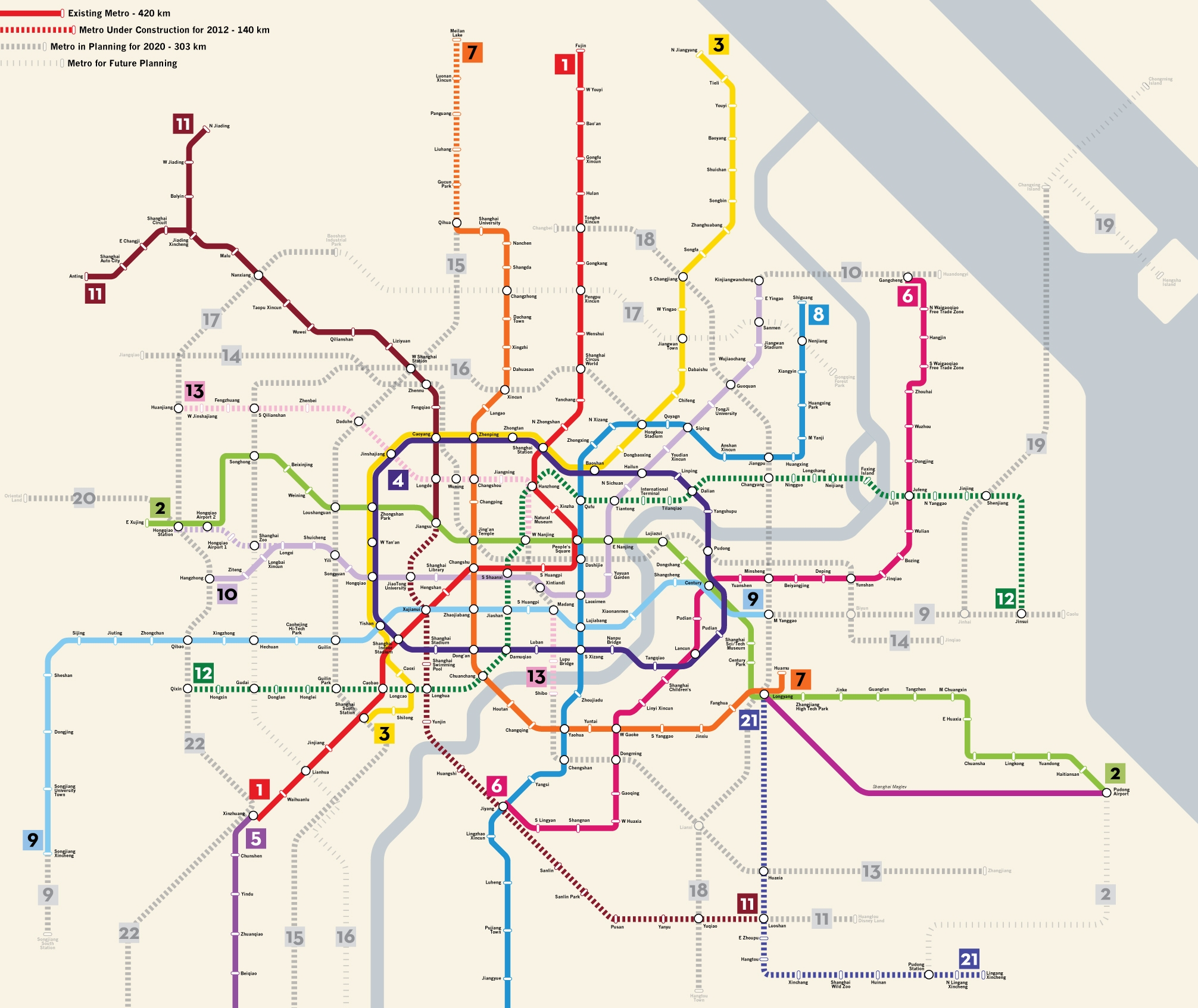Shanghai. I would’ve guessed Tokyo or London. Shanghai’s is larger: After opening several new lines this year, it’s got 282 stations and 420 kilometers (261 miles) of lines, compared to 408 kilometers (254 miles) in London and 368 kilometers (229 miles) in New York. It’s only 15 years old, and it’s set to double in size by 2020. It’s expected to pass the busiest systems — Tokyo’s and Moscow’s — within the decade.
Numbers alone don’t reveal the full scope of this thing; here’s a nice illustration from The Transport Politic (click for a larger version):
 Shanghai’s metro transit expansion planImage: The Transport Politic
Shanghai’s metro transit expansion planImage: The Transport PoliticNow here’s the part you’ve probably heard before: China is investing way the hell more than the U.S. in infrastructure, clean energy, and such. The Chinese government plans to invest $150 billion toward transit in its largest city alone by 2015. By comparison, the U.S. typically commits about $2 billion a year to transit capital projects nationwide, Yonah Freemark writes.
This isn’t about the “threat” of a developing China. It’s an absolutely fabulous thing that so many people are escaping poverty and reaching a higher standard of living.
The threat is that Republican politicians aren’t interested in even comparatively modest projects, like an early-stage high-speed rail plan. And we’re not even maintaining the rail lines, roads, bridges, pipelines, and schools we’ve got, according to the damning Infrastructure Report Card from the American Society of Civil Engineers.
Okay, this wasn’t supposed to be a downer post. The point is that people are doing stunning, forward-looking things around the world. We can learn from that.


